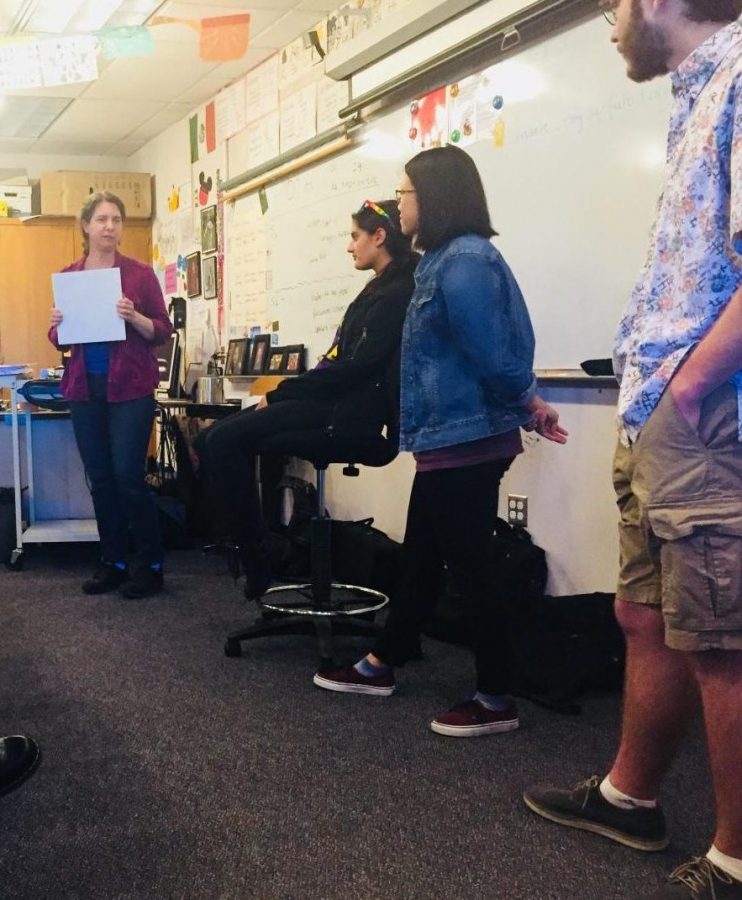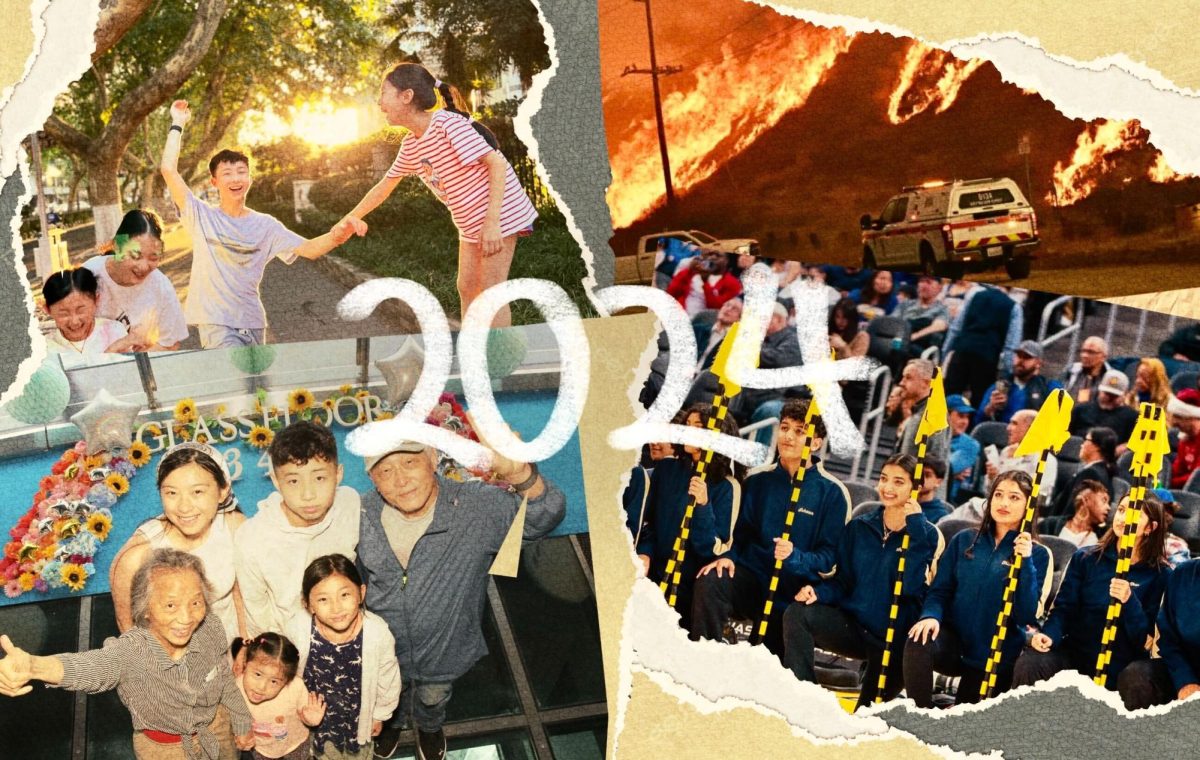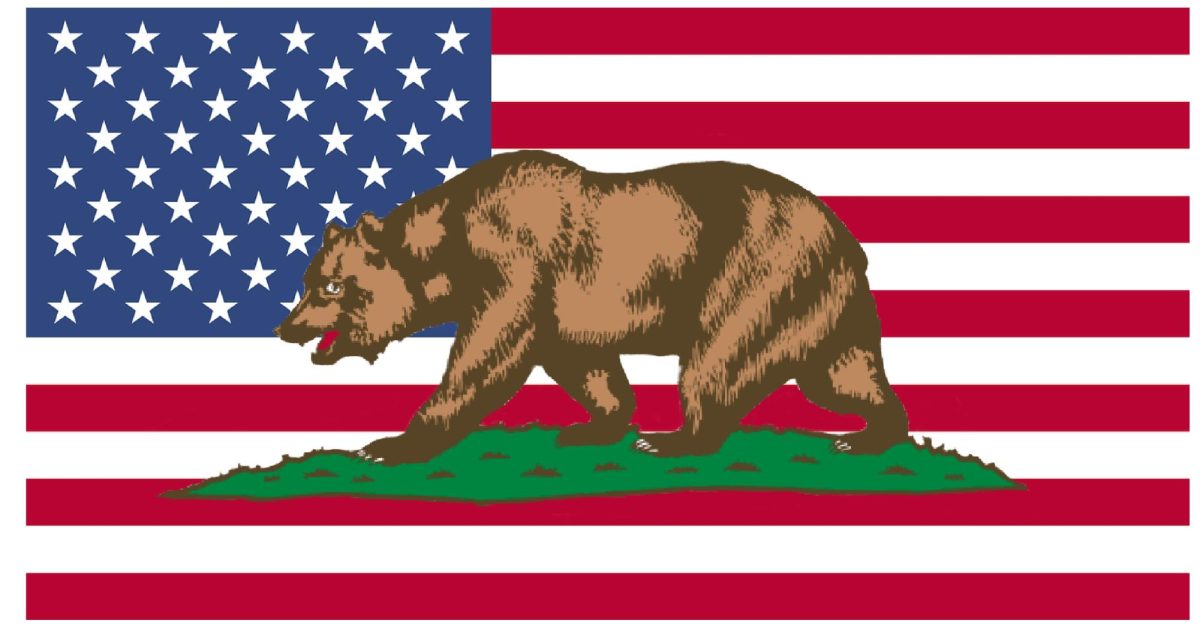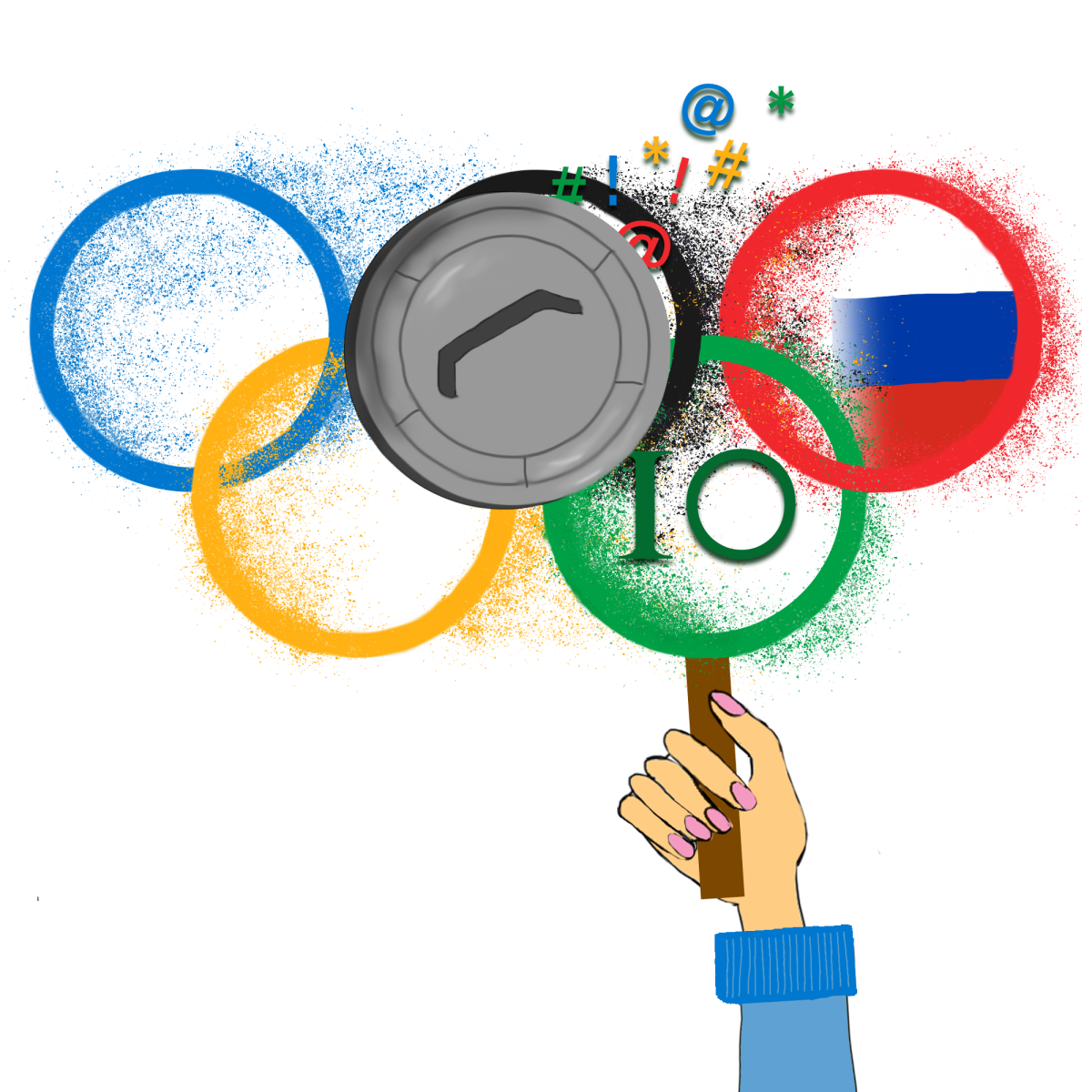A Gender Sexuality and Alliance Q&A with French student teacher, Marie Roy
Spanish teacher Joyce Fortune, advisor, and club officers Maya Tate, Natasha Lee, and Stephen Migdal (left to right) talk about their plans for National Coming Out Day on October 5th, hosted by the Gender Sexuality and Alliance club. Photo by Dhruvika Randad.
September 28, 2018
Along with the usual Q&A that introduced new members to the club, a special guest was introduced: French student teacher Marie Roy. As an incoming teacher for the new year, she believes that it is important to understand the different communities at school and their styles of interaction, to which she asks the question: “What kind of support would you like in the classroom from teachers?”
The aim is to make school more comfortable for all students, regardless of race, gender or sexuality. During the beginning of the discussion, the focus was on the concept of using gendered language and being aware of the pronouns students use. Then it took a turn to integrate sexualities and relationships that are not heterosexual.
“So much of what we see in school is very heteronormative and that doesn’t mean that every single piece of content that doesn’t include gay people is wrong, but it’s just nice to be represented,” public relations manager Stephen Migdal said.
At school, much of the content, especially in language classes, is heteronormative and according to Roy, it’s mainly due to the teachers following the structured textbook curriculum in class.
Spanish teacher Joyce Fortune has tried to shift that sort of “norm” thinking in her classroom, by incorporating all kinds of family relations in her examples.
“In Spanish 4, we do all the family members, so it’s not just in Spanish 1- mother, father, brother, sister. Spanish 4 is everybody and so we have these activities where we do the ‘mother of my mother is my grandmother,’ ‘the brother of my father is my uncle,’ and I specifically included a few like ‘the wife of my daughter is my daughter-in-law,’ really putting it in front of their eyes,” Fortune said.
The club finds it crucial to put concepts of families that include LGBTQ+ members, to show the norm of a completely heterosexual family is far from the truth. Students are exposed to new concepts that they may have been sheltered from or not had the chance to explore. It is important to try and include students that are part of the LGBTQ+ community and give them a platform to express themselves at school, safely.
“We have two main goals, we have the aspect which is more interior, kids can come here and feel safe and hopefully when they leave the room, they are more comfortable so that’s less of changing the campus, it’s more in this room, we can do things that we don’t necessarily get to do outside,” Migdal said. “Then the other main goal is the education, awareness, that’s more about changing the school so people can be more sensitive and more educated.”
Migdal says it’s important to have a safe space for kids of all genders and sexualities, where they can feel safe about it and talk it out without the fear of judgment but also where people have awareness by knowing about the community but also being courteous of that and that responsibility lies on the teacher to keep the class safe and includes all students.
“I’m about to become a teacher and we are trying to do our best as future teachers, to just understand all the different communities that we’re interacting with at school and I’m here just to have the chance to listen to you and see how we can support you and what kind of support you’d like to have in the classroom from teachers,” Roy said. “So that’s what I’m doing here, I’m just observing, listening, and trying to do my best to be a good teacher.”




























